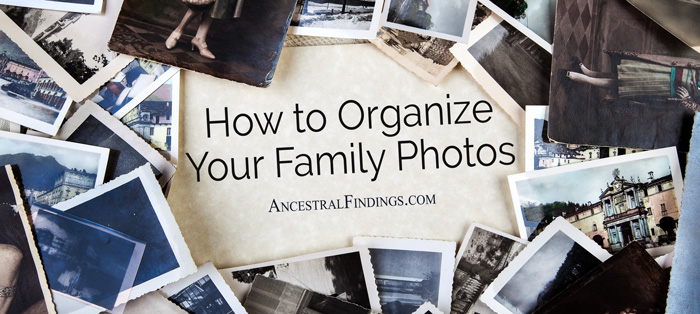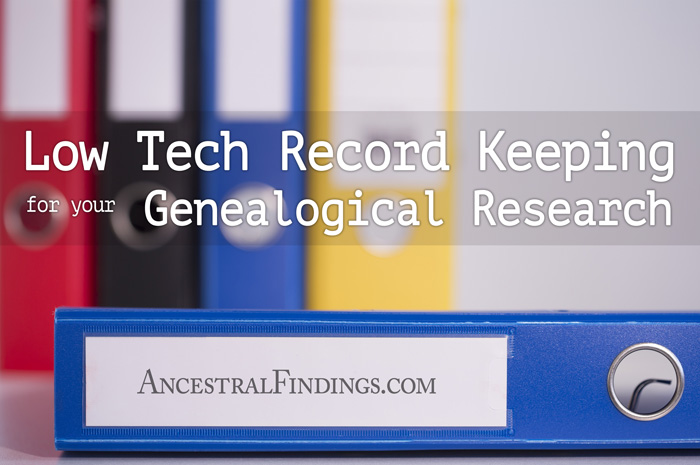When you are doing genealogy, you can collect a lot of information on a lot of people very quickly. This is especially true if you are working on more than one family line at a time. Yet, even if you are only working on one line, the number of people you are dealing with can become difficult to manage in a short amount of time. When you start documenting the lives of your ancestors siblings, nieces, nephews, aunts, uncles, cousins, and even in-laws, one family line can end up having several forests full of branches.
You need a way to organize it all so that you can find who you need to find quickly and with ease. Good genealogical organization will also assist anyone who uses your genealogy research work in the future in making easy and accurate use of your work, without confusion or needless time spent trying to sort out who is who, and who belongs to what branch. These are some genealogy organizing tips to help you keep everything neat, clean, and in order for you or anyone else who is using or even just reading your genealogy work.
- Use a Good Family Tree Software Program
This will be one of the best investments you will make in your genealogy research work. A good family tree software program will allow you to put people in their proper places on your tree from the very beginning of your genealogical journey. As you add more names, dates, and places, a good family tree software program will allow you to find people deep in your tree and go right to them using an index, usually indexed by surnames.
This means that if you are going to put a new name on your family tree and can’t remember the exact way they are connected to you, but you know who their parents, siblings, children, or other close relatives are, you can look up those relatives in your index (instead of clicking-through names on your tree, hoping to stumble across the correct person), go right there by clicking the name, and easily add your new person to your family tree.
Also, a good family tree software program will tell you exactly how you are related to any given person on the tree. No more getting out a piece of paper to draw a chart (or do mathematical calculations in your head) to figure out if someone is a first cousin three times removed or a third cousin one time removed; the software program will tell you. There may even be places to add profile pictures for your ancestors, so you will have faces to greet you when you go to the names.
You could build a family tree on Ancestry.com, but the tree isn’t as user-friendly as some of the independent software programs available in stores or online. You can still build an Ancestry.com tree if you want to use it to connect with potential distant cousins online. Even if you do this, you should still do some online research and purchase a solid, reputable family tree software program for your desktop or laptop.
- Make Family Folders on Your Computer
There are going to be times when you will have information about an ancestor that does not fit onto your family tree software program, but that you still want to save for future reference (such as for clues to building on your tree, for sharing with other relatives, or for writing the full story of your family in blog or book form for others to enjoy, etc.).
While most family tree software programs will have space for notes, where you can record biographical information, stories, and document transcriptions about your ancestor, this space won’t be suitable for every item you collect. This is where a good set of family folders can come in handy. In fact, they will be invaluable to organizing your genealogy in a digital format.
The best way to do this is to create an overall Genealogy folder on your computer’s desktop. Within that folder, create sub-folders by family surname. Within the family surname sub-folder, you can create a sub-sub-folders to put each document type for that surname, such as Birth Certificates, Death Certificates, Marriage Certificates, Military Records, Newspaper Clippings or Articles, Job Records, Census Records, Social Security Records, Information from Genealogy and History Books, and any other type of folder that is useful to you.
Label each individual file you put in a surname sub-folder using the surname first, then the date, then a short description of the document. These are usually going to be scans of physical documents that you have made, and have no place to put on your family tree software program. The surname sub-folders should organize themselves alphabetically within the Genealogy folder without you having to do anything. This will make it much easier for you to find the information you need on any given person on your family tree quickly and with delightful ease.
If you want to take it a step further and make your genealogy folders and sub-folders even more organized, you can make sub-folders for individuals, and put these within the appropriate surname folder. Within sub-folders for individuals, you can put the same types of sub-sub-folders for documents mentioned above, except that, instead of pertaining to anyone with that surname, these documents would only apply to that unique individual within the surname folder.
Save these documents with the same format you do other documents (surname, first name, the date, and a short description of the document). Like the surname folders, the individual name folders will alphabetically organize themselves on most computer operating systems. This type of finely detailed organization will assist you in keeping perfect track of the documents you have on each ancestor, whether by surname only or by individuals within a surname.
Once you’ve set up the folders, it’s easy to scan new documents and add them to the correct ones. It is also easy to create a new sub-sub-folder when you add new individuals to your tree or come across new documents, and put these in the correct place on your computer.




